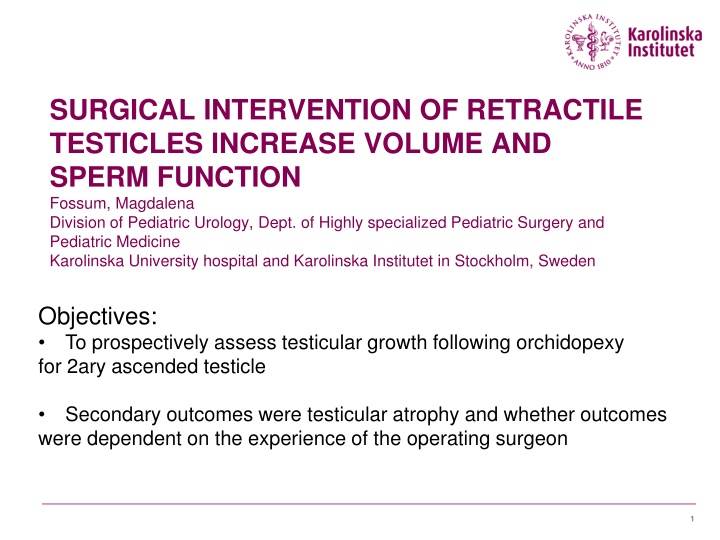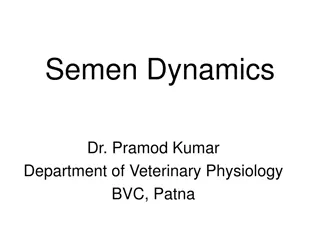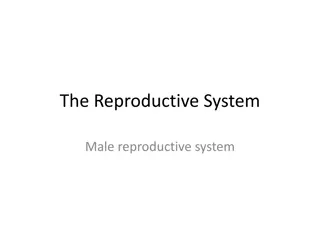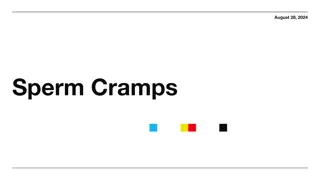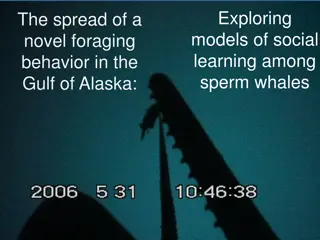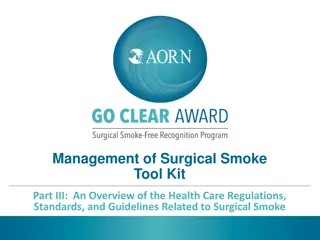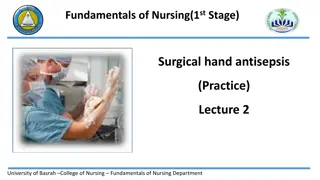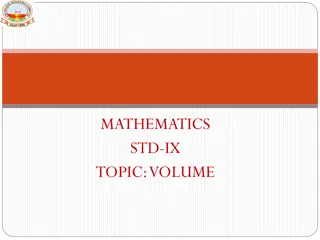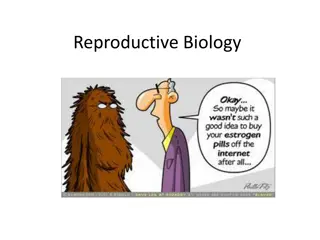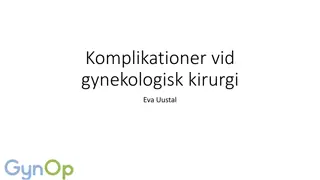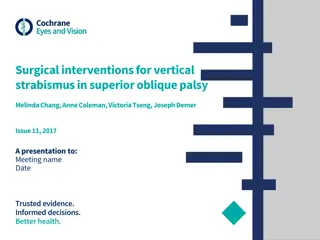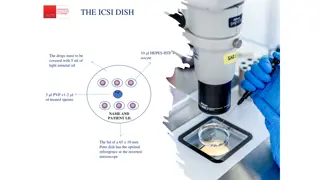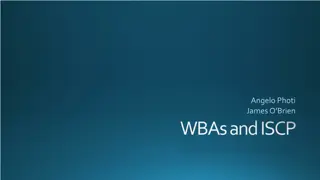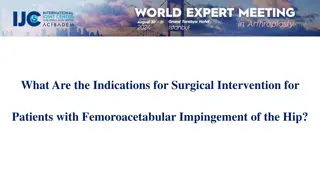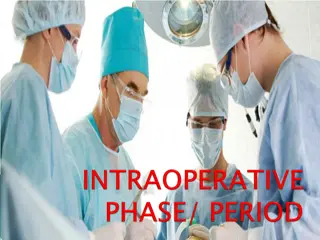SURGICAL INTERVENTION OF RETRACTILE TESTICLES INCREASE VOLUME AND SPERM FUNCTION
Study conducted by Fossum et al. aims to evaluate testicular growth post orchidopexy for secondary ascended testicle. Results will provide insights on testicular atrophy and the influence of surgeon expertise on outcomes.
Download Presentation

Please find below an Image/Link to download the presentation.
The content on the website is provided AS IS for your information and personal use only. It may not be sold, licensed, or shared on other websites without obtaining consent from the author.If you encounter any issues during the download, it is possible that the publisher has removed the file from their server.
You are allowed to download the files provided on this website for personal or commercial use, subject to the condition that they are used lawfully. All files are the property of their respective owners.
The content on the website is provided AS IS for your information and personal use only. It may not be sold, licensed, or shared on other websites without obtaining consent from the author.
E N D
Presentation Transcript
SURGICAL INTERVENTION OF RETRACTILE TESTICLES INCREASE VOLUME AND SPERM FUNCTION Fossum, Magdalena Division of Pediatric Urology, Dept. of Highly specialized Pediatric Surgery and Pediatric Medicine Karolinska University hospital and Karolinska Institutet in Stockholm, Sweden Objectives: To prospectively assess testicular growth following orchidopexy for 2ary ascended testicle Secondary outcomes were testicular atrophy and whether outcomes were dependent on the experience of the operating surgeon 1
Background Acta Pediatrica 2006 2
Study design Prospective study Patient group: boys with unilateral ascending testicles (previously diagnosed as retractile testicles) Ultrasound for volume measurements. Size of inguinal testicle was compared with contralateral side. Index was used (undescended/descended) New volume assessment 1-6 months after the surgical repair. Volume assessment with orchidometer. Control group: 20 boys with normal testicular status Definitions Index < 1 (smaller retracted testicle) Testicular atrophy was defined as >50% loss of volume Or postoperative volume <25% of the contralateral testicle Patients were excluded for incomplete data or loss for follow-up 3
Demographics Age (mean) P- value Volume (ml) Descended testicle Left P- value Volume (ml) Descended testicle Right P- value 4.6 6,3 (65 cases) 5,8 (35 cases) Cases (100) 4,5 6,5 5,9 Control (20) 0,98 0,95 0,9 4
Results Data from 100 patients were analyzed All had 2ary ascent and had undergone ipsilateral repair for non- descended testis Preop. inguinal testicles where smaller than contralateral side (p<0,05) Catch-up growth with a larger post-operative volume was found in half of cases Half of testicles were larger than in control subjects Secondary outcomes Testicular atrophy occurred in 2.5% of cases There was no reported testicular re-ascent There was no significant difference in outcomes comparing the experience of surgeon (consultant n = 2, trainee surgeon n = 2) 5
Conclusion Early operation of 2ary ascended testicles seems favorable as testicular size can be a proxy for function The mechanism for testicular catch-up growth is not well understood The present study concerning secondary non-descended testicles reported a low rate of re-ascending (2.5%) Testicular atrophy was not dependent on the experience of the operating surgeon Thank you! 7
Study design Prospective study Patient group: boys with unilateral ascending testicles (previously diagnosed as retractile testicles) Ultrasound for volume measurements. Size of inguinal testicle was compared with contralateral side. Index was used (undescended/descended) New volume assessment 1-6 months after the surgical repair. Volume assessment with orchidometer. Control group: 20 boys with normal testicular status. Definitions Index < 1 (smaller retracted testicle) Testicular atrophy was defined as >50% loss of volume or postoperative testicular volume <25% of the volume of the contralateral testis. Patients were excluded for incomplete data or loss for follow-up. 8
Study design Prospective study Patient group: boys with unilateral ascending testicles (previously diagnosed as retractile testicles) Ultrasound for volume measurements. Size of inguinal testicle was compared with contralateral side. Index was used (undescended/descended) New volume assessment 1-6 months after the surgical repair. Volume assessment with orchidometer. Control group: 20 boys with normal testicular status. Definitions Index < 1 (smaller retracted testicle) Testicular atrophy was defined as >50% loss of volume or postoperative testicular volume <25% of the volume of the contralateral testis. Patients were excluded for incomplete data or loss for follow-up. 9
Study design Prospective study Patient group: boys with unilateral ascending testicles (previously diagnosed as retractile testicles) Ultrasound for volume measurements. Size of inguinal testicle was compared with contralateral side. Index was used (undescended/descended) New volume assessment 1-6 months after the surgical repair. Volume assessment with orchidometer. Control group: 20 boys with normal testicular status. Definitions Index < 1 (smaller retracted testicle) Testicular atrophy was defined as >50% loss of volume or postoperative testicular volume <25% of the volume of the contralateral testis. Patients were excluded for incomplete data or loss for follow-up. 10
Study design Prospective study Patient group: boys with unilateral ascending testicles (previously diagnosed as retractile testicles) Ultrasound for volume measurements. Size of inguinal testicle was compared with contralateral side. Index was used (undescended/descended) New volume assessment 1-6 months after the surgical repair. Volume assessment with orchidometer. Control group: 20 boys with normal testicular status. Definitions Index < 1 (smaller retracted testicle) Testicular atrophy was defined as >50% loss of volume or postoperative testicular volume <25% of the volume of the contralateral testis. Patients were excluded for incomplete data or loss for follow-up. 11
Study design Prospective study Patient group: boys with unilateral ascending testicles (previously diagnosed as retractile testicles) Ultrasound for volume measurements. Size of inguinal testicle was compared with contralateral side. Index was used (undescended/descended) New volume assessment 1-6 months after the surgical repair. Volume assessment with orchidometer. Control group: 20 boys with normal testicular status. Definitions Index < 1 (smaller retracted testicle) Testicular atrophy was defined as >50% loss of volume or postoperative testicular volume <25% of the volume of the contralateral testis. Patients were excluded for incomplete data or loss for follow-up. 12
How would this abstract be graded by the ESPU grading team? BACKGROUND: The Nordic consensus statement advocate orchidopexy at an early age for primary non-descended testicles (6-12 months of age). The rationale for early intervention has been to reduce the risk of later malignancy and to increase fertility. In the present study we sought to investigate the outcomes of surgical intervention of secondary non-descended testicles at a tertiary Swedish center. OBJECTIVE: To prospectively assess testicular growth following orchidopexy for secondary undescended testes in a pediatric population. Secondary outcome were testicular atrophy and whether outcomes were dependent on the experience of the operating surgeon. Problem description : Clear (+5 p) 13
STUDY DESIGN: In a prospective study, 100 unilateral ascending testicles (previously diagnosed as retractile testicles) that were palpable in the inguinal region but could not be mobilized to a withstanding position in the scrotum, was assessed by ultrasound for volume measurements. Size of inguinal testicle was compared with contralateral side. New volume assessment was made by palpation and comparison with an orchidometer 1-6 months after the surgical repair. Another group with normal testicular status was used as controls (20 subjects). Prospective data regarding age at operation, classification of the undescended testis, length of follow-up, and comparison of intraoperative and postoperative testicular volumes compared with the contralateral testis were collected . Testicular atrophy was defined as >50% loss of testicular volume or a postoperative testicular volume <25% of the volume of the contralateral testis. Patients were excluded for incomplete data or loss for follow-up. Method: Prospective, large group, clear definitions, Matched control group (+25 p) 14
RESULTS: Data for 100 patients were analyzed. Testicular atrophy occurred in 2.5% of cases. All secondary cases underwent an ipsilateral repair for non- descended testis. There was no reported testicular re-ascent. There was no significant difference in outcomes comparing the experience of surgeon (consultant n = 2, trainee surgeon n = 2). Postoperative catch-up growth with a larger post-operative volume was found in half of cases. Half of testicles were larger than in control subjects. Results: Concise sentences, new and important (10 p) 15
DISCUSSION: Previous studies have reported a testicular atrophy rate of 5% after repair of primary non-descended testicle. The present study concerning secondary non-descended testicles reported a lower rate of 2.5%. It was also found that testicular atrophy was not dependent on the experience of the operating surgeon. Animal studies have supported the hypothesis that increased temperature has a detrimental effect on testicular volume. However, follow-up in the present cohort was short (median 3 months), making interpretation of this finding difficult. Good testicular size has been acknowledged as a marker for good function related to spermatogenesis. CONCLUSION: Catch-up growth after surgery was found after repair of secondary ascended testicles. The mechanism for testicular catch-up growth is not well understood. Conclusion: Valid (0 p) (no penalty) In summary: probably around 80-90 p from each reveiwers Accepted poster! 16
ESPU scientific committee would probably have accepted this abstract for a poster presentation. However, BIAS, does not make this a convincing paper. In this example we visualize the importance of: - peer reviewing - scientific communications - ethics and honesty in research 17
